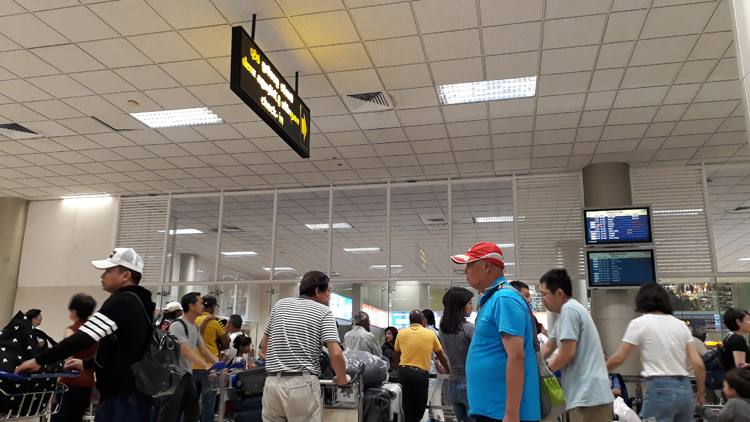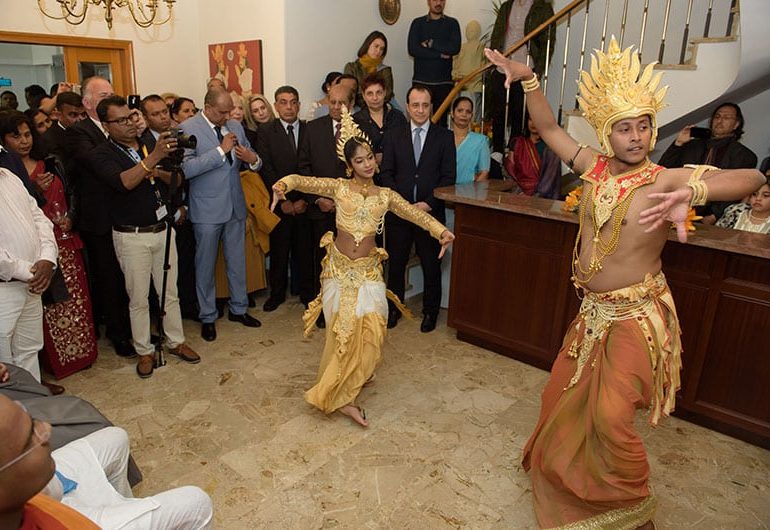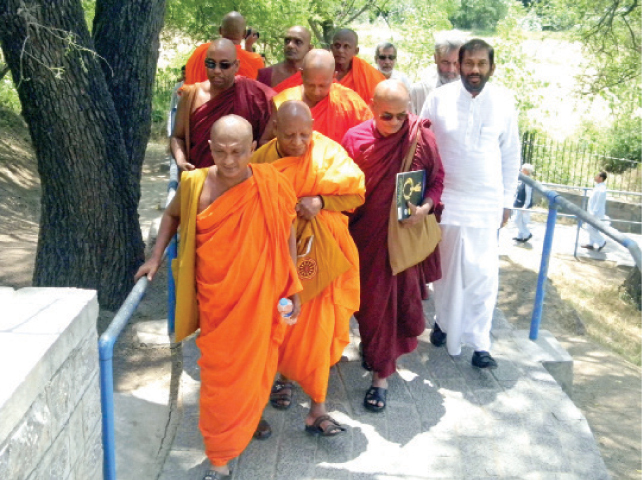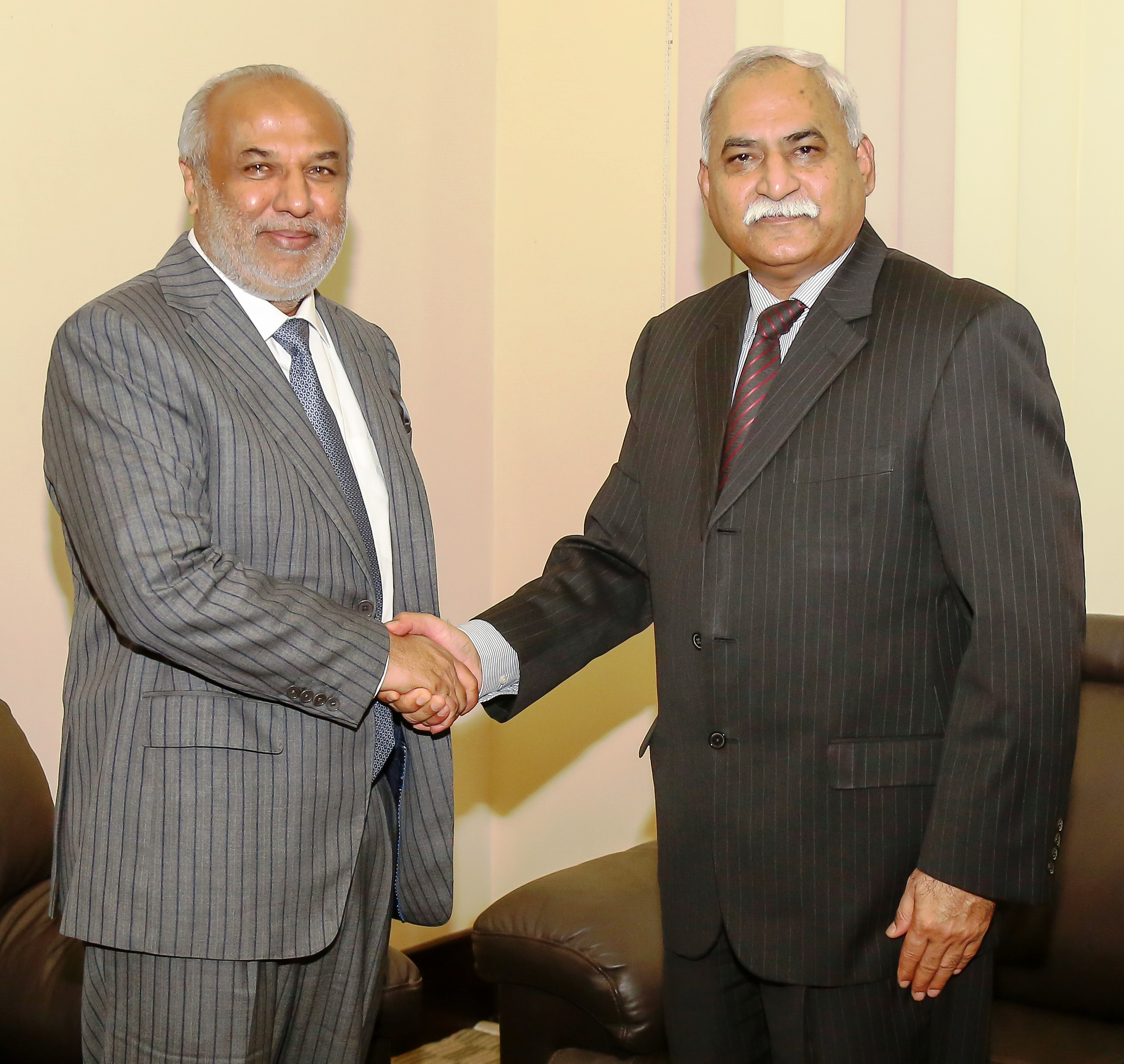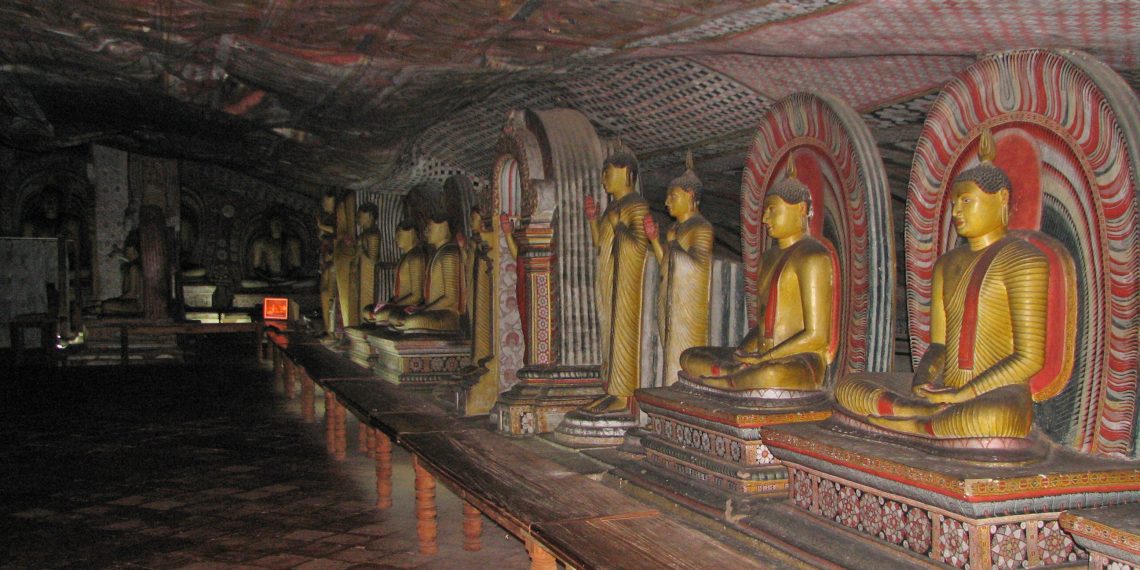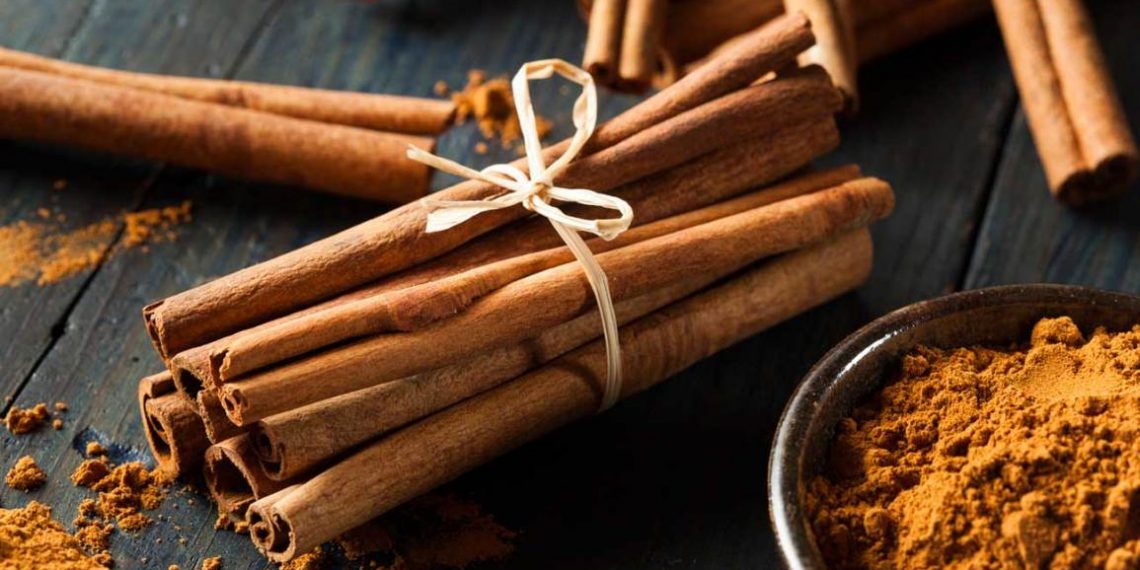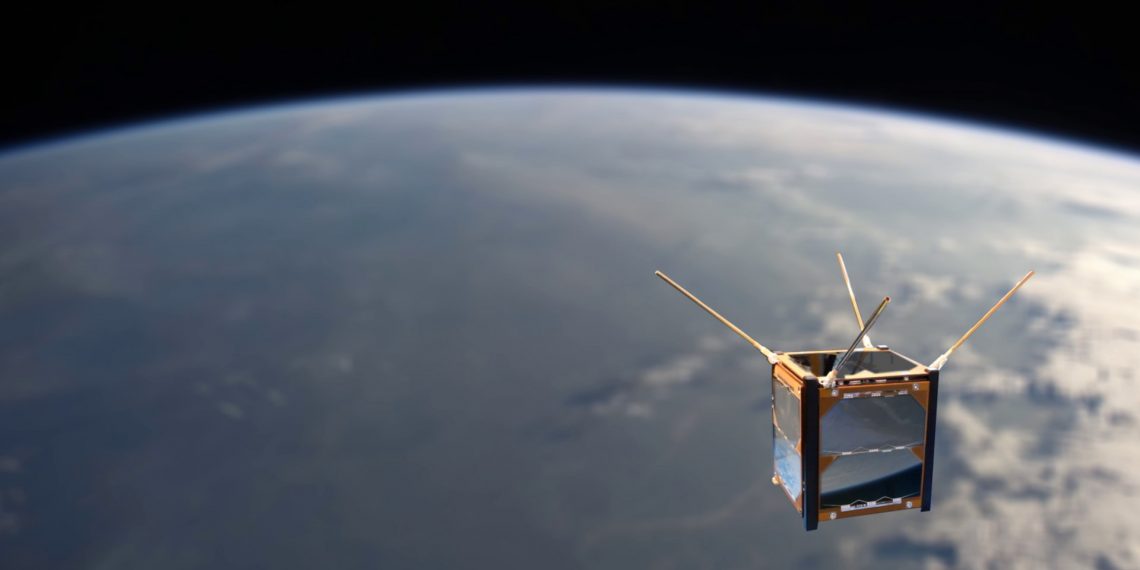
Waves cartwheel onto a secluded beach, funnelling into a mangrove-fringed stream and gently pushing a boat in which a fisherman named Ranji carries the catch of the day.
Ranji, who has been fishing the waters off the south coast of Sri Lanka for the past 30 years, sets off every day at 3 a.m. and typically returns with a boat heavy with fish.
When he shows up with the bounty at Anantara Peace Haven Resort Tangalle, his biggest customer, a bell sounds, a simple testament to his hard work.
Ranji proffers a leaf-bottomed straw basket and we select a white mullet and a red-speckled grouper. The fish will soon be delicately deboned, marinated and presented as the main dish in a four-course lunch, served in a thatched-roof treehouse flanked by the stream and a rice-paddy field.
In an open-air kitchen, executive chef Chimanda Pathirana and his team prepare a fresh eggplant salad and beet carpaccio made from ingredients picked moments earlier from the sprawling organic vegetable garden.
This is the Harvest Table experience, the latest culinary invention of Anantara’s Peace Haven, located on a stretch of unspoiled coastline at the southern tip of Sri Lanka.
The three-year-old resort unfolds over 42 acres of a tropical coconut plantation, which is why the humble coconut features prominently during our stay. Coconut water is served from a smooth coconut shell upon arrival, which is also marked by a welcome drum ceremony performed by three traditional singers.
We’re flanked by a coastline that is part craggy cliffside, where the waves crash like shattered glass, and part golden beach, which looks ripped from a desert-island film.
Tangalle, which means “projected rock” in Sinhalese, is halfway between the colonial fort city of Galle and Yala National Park, the country’s largest national park, where leopards roam amid the elephants.
As we had bounced in the back of a tuk tuk — a small three-wheeled vehicle used as a taxi — between the more populated beach towns of Unawatuna and Mirissa en route to Tangalle, the sheer force of the Indian Ocean was omnipresent. It’s a constant reminder of the devastating tsunami on Boxing Day 2004 that killed more than 30,000 people.
Nilanka, an industrious 20-something tuk tuk driver from Unawatuna, was away in Kandy the day a 9.1-magnitude earthquake pushed a towering wave onto his hometown. It was weeks before he found out that his mother, father and brother had been killed, their humble residence destroyed. His tuk tuk, his source of livelihood, was also swept away by the wave. A friend living in Italy helped him raise the money for a Piaggio, which is kind of like the Mercedes of tuk tuks.
The wave indiscriminately wiped out coastal homes and businesses, but Nilanka said an influx of tourist dollars helped many residents who struggled to rebuild in the immediate aftermath.
• • •
Sri Lanka attracted 2.1 million visitors last year, a record for a country that just over a decade ago, was still locked in a brutal civil war.
The Tourism Development Authority hopes to double that by 2020, something Dilan Bandara, manager of Anantara Tangalle, believes is more than achievable.
Travel bible Lonely Planet has named Sri Lanka the best country in the world to visit in 2019. In anticipation of a tourist influx, global hotel chains are clambering to open new properties across the country and villagers are converting their homes into tourist guesthouses.
Bandara is confident Sri Lanka will outpace Bali as a destination for beaches, surfing and trekking. He’s speaking in the lounge of the resort’s cliffside restaurant, Il Mare, as we sip cocktails of smoked arrack, a whisky distilled from the sap of a coconut flower, flavoured with fresh pineapple juice and passionfruit.
Bandara, a native of Tangalle, says a new highway under construction will shorten the journey from Colombo to Tangalle, which he hopes will increase visitors to Tangalle’s beaches.
Sri Lanka’s attraction is its incredible biodiversity, Bandara says. “You can travel 1.5 hours out to sea, you’ll see the blue whale, the biggest creature in the sea. You travel 1.5 hours north, into the jungle, and you can see elephants, the biggest mammals on land.”
We take a walk with Anantara’s nature guru, Eddie, a binocular clad computer-scientist-turned-biologist with an encyclopedic knowledge of the country’s wildlife. He points out a monitor lizard, chameleons, langur monkeys, Indian Palm squirrels and dozens of species of dragonflies. Hanging out on the beach at the right time of day might afford you a glimpse of adorable baby turtles migrating from their sandy nesting areas to the sea. Anantara has partnered with the International Union for Conservation of Nature Sri Lanka to protect these globally threatened marine species.
We do catch a glimpse of the famed resident porcupine, which freezes us in our seats as she casually ambles by our dinner table one night, hovering next to my husband’s leg, her quills extended upward. We make no sudden movements and eventually she carries on, quills firmly in place.
• • •
For a chance to see wildlife outside the comforts of the resort, we drive an hour and a half north of Tangalle, where Udawalawe National Park promises the opportunity to witness the humble majesty of elephants. We set out in the safari jeep before 6 a.m., just in time to catch a cotton-candy sunrise that tints the arid landscape a soft pink.
We pay our entrance fee to the national park ($88 Cdn for two people) and cast our eyes out over the expanse. Our driver, Predeep, a fresh-faced 21-year-old with a lead foot, points out pelicans, toucans, a painted stork, crested hawk eagles, egrets, jackals and foxes.
He gets a call on his mobile phone and catapults us forward, the jeep tipping back and forth over the potholed dirt roads. “Group of elephants,” he calls out, so we know what all the fuss is about.
After a few brisk turns and wading through waterlogged trenches I fear might swamp the jeep, we reach a herd of female elephants and their babies. They pay little attention to the swarm of safari jeeps, casually picking up grass with their trunks and shoveling it into their mouths.
Just before we exit the park, Predeep suddenly reverses the jeep down the bumpy dirt path, which confuses us until we see a large male elephant emerge from the bushes and stomp casually toward our vehicle, before making a turn to amble down the road.
Predeep says we are lucky to spot the massive bull. The experience of letting him come to us feels less intrusive than the pack of jeeps that surrounded the female herd.
The day after the safari, we pack our bags and head for Ella, a village in the hill country best known for the colonial-era Nine Arch Bridge. Our lodging is at the Ella Hide View, a family-run guest house accessed by a steep winding road that almost defeats a battered, suitcase-laden tuk tuk.
The accommodation is humble but the main draw is, as the name suggests, the view. The entire guest house perches on the side of a hill, looking out onto the Little Ravana waterfall and a velvety green valley called the Ella Gap.
From the two hanging wicker chairs on our room’s balcony, we watch sunrises, torrential rains, thunderstorms and rainbows. It’s October, near the end of the country’s monsoon season, but the rains are hard, fast and predictable, making it easy to avoid getting drenched.
Our routine for the four days in Ella works like this: Up at sunrise, an early breakfast to fuel trekking, and exploring the town until about noon. At that point, it’s a smart idea to tuck into a local café or head back to the guesthouse before the rain buckets down.
At night, with no light pollution, the hills become a blackened mystery, a darkness that amplifies the cacophony of jungle sounds, the rhythmic buzzing of cicadas and the chirp of crickets.
The main village is easily accessible via a set of concrete stairs (easier going down than up) and a five-minute walk down the railroad tracks, which, despite being well-used by passenger and cargo trains, double as a sidewalk for locals and brave tourists.
The walk to the village leads us past humble homes in various states of construction. Dumidu Sampath, whose family opened the guest house four years ago, says there’s a flurry of building as many villagers convert living spaces into guest houses to accommodate the crush of tourists. The industriousness has created tension in the neighbourhood, Sampath says, with some frustrated that their quiet lifestyle is being opened up to camera-toting backpackers.
“It’s good for the economic side, but for neighbours…” says Sampath, rubbing his fists together in a sign of friction.
Ranjith Peris, the 30-something manager at a hip café called Starbeans, a riff on Starbucks, looks at travellers sipping lattes while paging through Sri Lanka travel guides.

